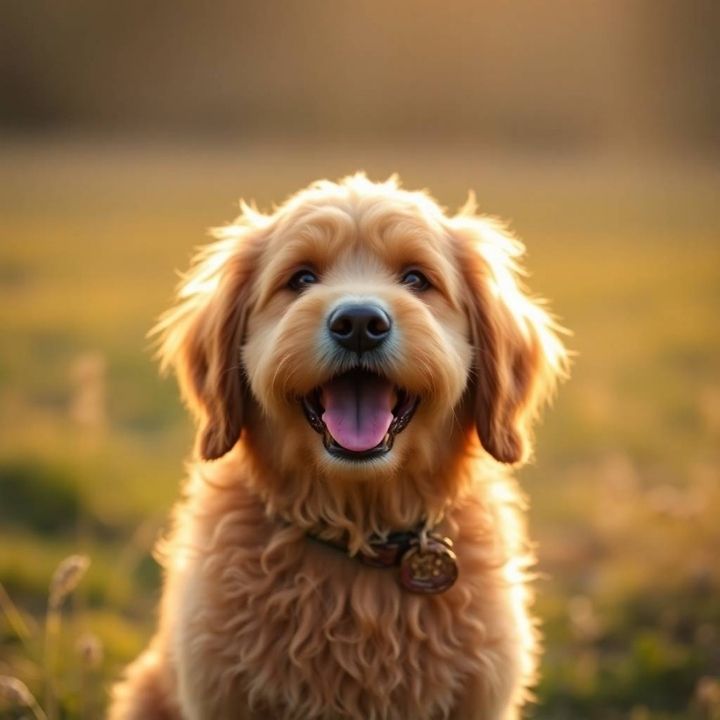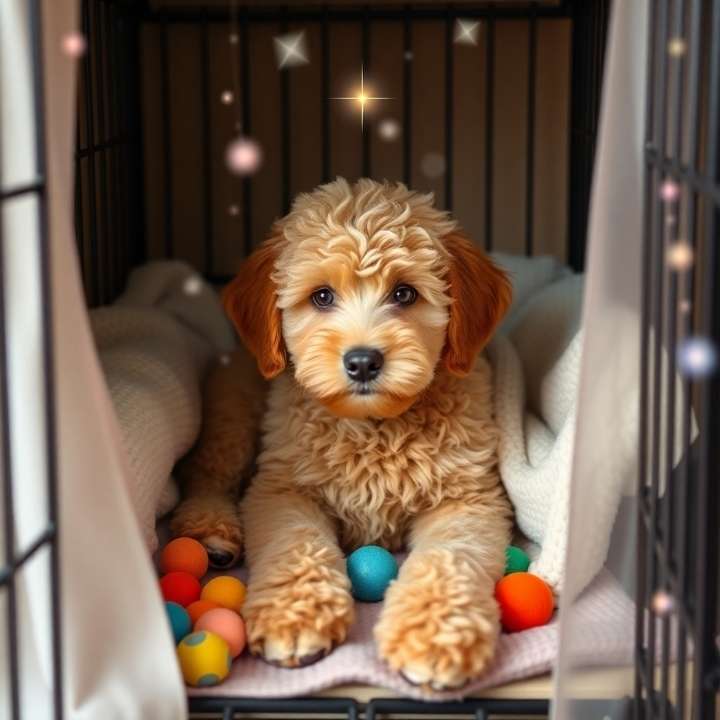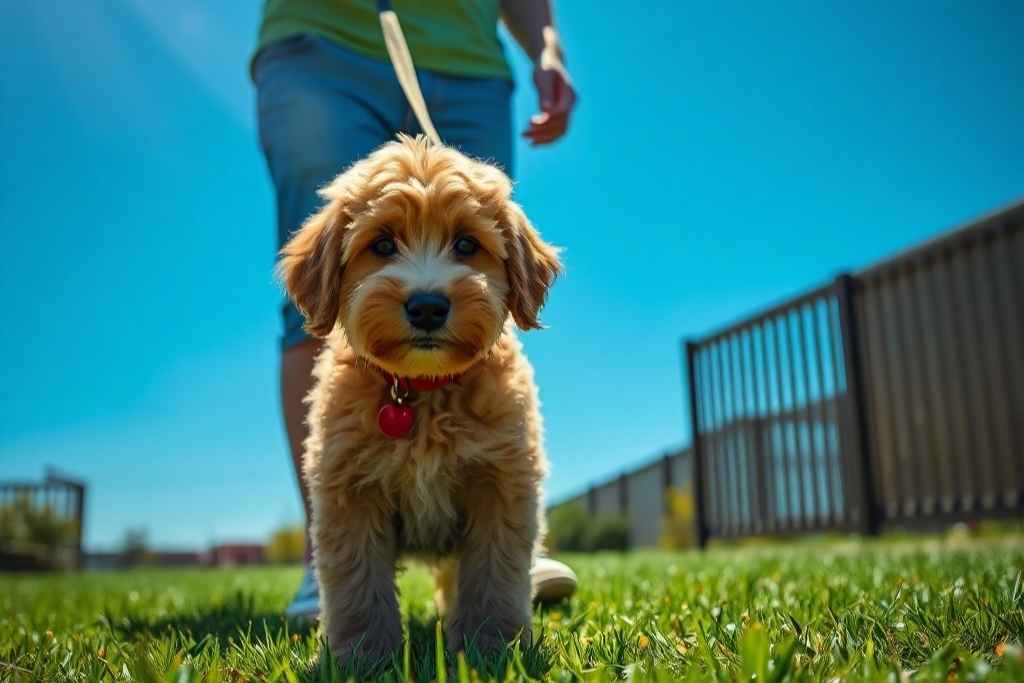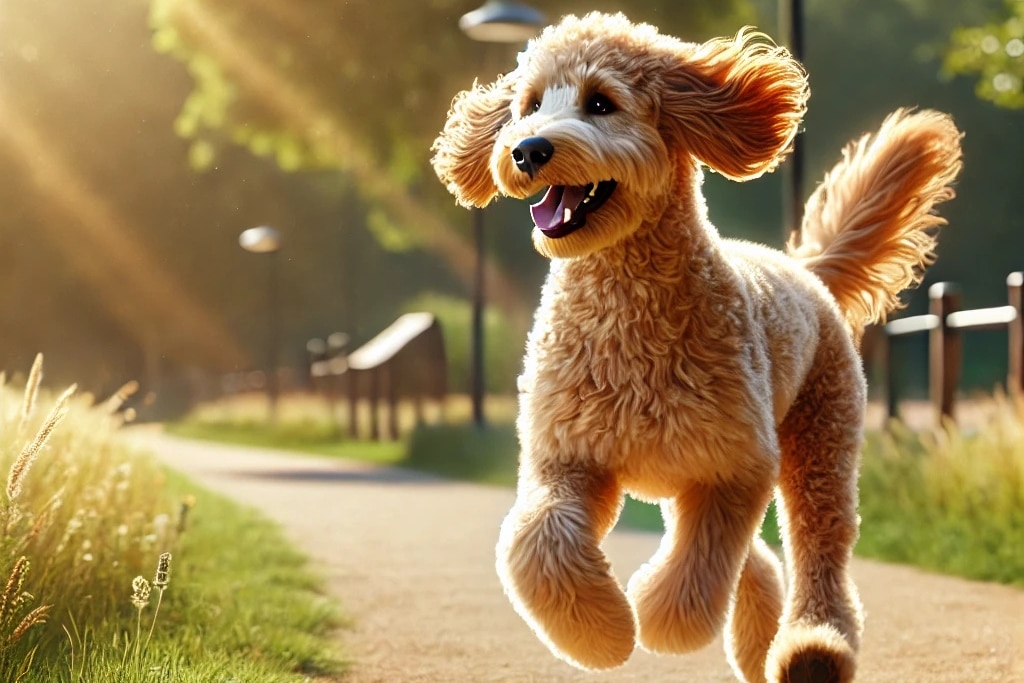Goldendoodles are widely beloved for their friendly nature, intelligence, and hypoallergenic qualities, making them one of the most popular hybrid dog breeds. If You’re a first-time dog owner or an experienced handler, understanding the importance of training your Goldendoodle is essential for ensuring they grow into well-mannered and well-adjusted pets.
From early socialization to addressing behavioral challenges and mastering basic commands, the process of training your Goldendoodle is a rewarding experience that strengthens your bond with them.
This comprehensive guide covers everything you need to know about training your Goldendoodle, offering step-by-step instructions for potty training, crate training, and preventing common behavior issues.
Getting Started with Goldendoodle Training
Training your Goldendoodle begins with a solid foundation of trust and patience. It’s important to start early, as Goldendoodles are highly intelligent and learn quickly, but they also need clear boundaries and routines. In the early stages, the focus should be on socialization and establishing a bond with your puppy.

A consistent routine, positive reinforcement, and basic commands like “sit” and “stay” set the stage for further learning. Goldendoodles thrive when they are exposed to a variety of experiences and environments from an early age.
Why Goldendoodles Thrive With Proper Training
Goldendoodles truly shine when given the right training, thanks to their innate intelligence and eagerness to engage positively with people. Training offers them much-needed mental stimulation, warding off boredom and diminishing unwanted behaviors like chewing or barking.

It will mean much to have a routine that quite captures the mind and body of a Goldendoodle. Make sure to use positive reinforcement techniques that work off of their need for attention and affections, and the want for treats or toys.
Key benefits:
- Mental Stimulation: Regular training keeps their minds sharp and reduces anxiety.
- Stronger Bond: Engaging in training fosters trust and mutual respect between you and your pet.
The Importance of Early Socialization for Your Goldendoodle
Socialization is important in order to shape the behavior and temperament of your Goldendoodle. It exposes them to different environments, people, and other animals during their formative weeks – between 3 to 16 – you will be able to develop a well-adjusted and confident companion.
Start socializing your Goldendoodle by exposing him to various kinds of people and other animals in a controlled environment. Take him out for walks and give him exposure to stimuli in the form of traffic, other dogs, and mixed environments without causing him pain. When your puppy remains calm, praise him and give him treats.
Steps to effective socialization:
- Introduce your puppy to new people, sights, sounds, and experiences gradually.
- Arrange playdates with other dogs or enroll in puppy socialization classes.
- Monitor their reactions and provide reassurance when they seem nervous.
Foundation Construction With Positive Reinforcement
Reward the desired behaviors positively with treats, praise, or toys. Avoid punishment because it might cause fright or aggression. Good behaviors should be reinforced immediately for clarity and effectiveness.
In positive reinforcement implementation, use treats, praise, or toys to give your Goldendoodle rewards the moment it displays the appropriate behavior. Timing is very important, as rewarding a dog within seconds of what they just did makes it clear what they are rewarded for.
How it works:
- Rewards such as treats, praise, or toys are given immediately after the desired behavior.
- This reinforces the behavior, making your Goldendoodle more likely to repeat it.
- Consistency in rewarding behavior is key to building a solid foundation.
Addressing Common Goldendoodle Behavioral Challenges
Goldendoodle behavioral challenges like chewing, jumping, and barking can be managed with understanding and consistency. Chewing often helps puppies with teething and relieves boredom in older dogs.
Offer chew toys like KONGs and redirect them if they chew furniture, using deterrent sprays as needed. Jumping is their way of seeking attention or greeting; ignore the behavior, turn away, and reward them for sitting instead. Excessive barking may stem from boredom, fear, or excitement.
Identify triggers, use commands like “quiet,” and reward silence. Puzzle toys and interactive feeders also help reduce boredom and keep them engaged.
Crate Training Your Goldendoodle
Crate training is important to Goldendoodles as this will give them an area where they can just sit and be safe besides aiding housebreaking and behavior control. Let’s start by placing a blanket, toys, and treats into the crate to make the place inviting. Encourage the dog to go inside. Reward the dog for having the initiative to go in.

Gradually increase the time spent indoors with the door closed while rewarding for remaining calm. Never punish the dog in the crate. Make it a routine practice by putting your Goldendoodle in the crate every time he is sleeping and at night, also a short time away from you.
Potty Training Your Goldendoodle Puppy
Potty training is one of the first steps in teaching your Goldendoodle good habits. Puppies have small bladders and need frequent bathroom breaks. Consistent potty training helps prevent accidents and establishes good habits early on.
Start by taking your Goldendoodle outside frequently, especially after meals, naps, and playtime. Use a consistent phrase, like “go potty,” every time you take them outside, and reward them when they eliminate them in the appropriate spot. If accidents happen indoors, clean them thoroughly to remove any scent markers that may attract them back to the same spot.
Ideal Age to Start Training a Mini Goldendoodle
The ideal age to start training a Mini Goldendoodle is around 8 weeks, as their brains are highly receptive at this age. Early training and socialization help prevent behavioral issues like barking, chewing, and anxiety.
Keep sessions short (5-10 minutes) to avoid overwhelming them. Start with basic commands like “sit,” “stay,” and “come,” and expose them to different people and environments.
While 8 weeks is ideal, it’s never too late to start—early training helps shape good behavior that lasts a lifetime.
Creating a Training Schedule
A well-structured training schedule ensures that your Goldendoodle receives consistent and effective guidance. Begin by dividing the day into segments for feeding, potty breaks, playtime, and training sessions.
Daily Training Schedule Overview
A daily training schedule for a Goldendoodle should balance training, exercise, and rest. Here’s an example of what a typical day might look like:
Morning:
- Potty break (first thing after waking up).
- Breakfast followed by a 10-minute training session on basic commands.
- A short walk or playtime.
Afternoon:
- Midday potty break.
- 10–15 minutes of crate training or leash training.
- Interactive play with toys to provide mental stimulation.
Evening:
- Dinner followed by a potty break.
- 15-minute training session on new or reinforced commands.
- Light exercise like a game of fetch or a walk.
Night:
- Calm bonding time, such as brushing or cuddling.
- Final potty break before bed.
This structure ensures your Goldendoodle remains engaged, learns consistently, and has plenty of opportunities for exercise and bonding throughout the day.
Training Shedule Guide
Week 1: Building the Basics
Focus on building trust and introducing basic commands like “Sit” and “Stay.” Familiarize your Goldendoodle with their name and encourage them to respond. Start crate and potty training by creating a comfortable crate environment and sticking to a consistent potty schedule. Ensure consistency among all family members.
Week 2: Introducing Basic Commands
Expand your Goldendoodle’s training by introducing commands like “Come,” “Down,” and “Leave It.” Use positive reinforcement and practice daily, gradually adding distractions. Begin leash training, encouraging your dog to walk beside you without pulling.

Week 3: Crate Training and Housebreaking
Reinforce crate training by gradually increasing time spent in the crate. Maintain a consistent potty schedule, using verbal cues like “Go potty.” If accidents happen indoors, clean thoroughly to prevent repeats. Keep training sessions short and continue reinforcing commands.
Week 4: Socialization and Positive Reinforcement
Expose your Goldendoodle to new environments, people, and sounds to build confidence. Organize controlled playdates or take trips to pet-friendly places. Reward positive behaviors, and your Goldendoodle will become more confident in new situations.
Weekly Milestones and Adjustments
- Week 1: Responds to their name and basic commands.
- Week 2: Follows commands reliably and starts leash training.
- Week 3: Fewer indoor accidents and better crate behavior.
- Week 4: Confidence around new people and environments.
Track milestones to adjust your training as needed, celebrating small wins and ensuring consistency. Goldendoodles learn at different paces, so adjust your approach to keep them engaged.
Consistency: The Key to Success
A plan is very important to train dogs well. Be it a daily schedule, commands, or rewards, consistency will help the dog learn faster and remember more. Goldendoodles thrive with a routine; ensure most activities like; training sessions, feeding times, or walks—are regular so they can learn faster and know what to expect.
Give Rewards after Training
Among the critical motivating tools during training, rewards are very useful, and the kind of reward you use will determine the progress of your Goldendoodle. Here are the major types of rewards:
Food Motives
One of the best motivators in training foods. Use small, high-value goodies your dog will really love to eat. Boiled chicken, cheese cubes, and specialized training treats can be great choices.
Be sure to only dangle them rarely so the Goldendoodle doesn’t get overweight, so dish out plenty of them in the command when you do one out that precipitates the successful behavior getting finished.
Praise/Attention Rewards
In a nutshell, sometimes the richest award just can be vocal praise to a dog. “Good boy!” or a nice soft pat may be enough.
Lots of Goldendoodles and other breeds need attention and praise and the non-edible award system will really help motivate your dog to repeat these more positive behaviors that you’re training against.
Like calmly lying down or quietly in its crate and this praise builds a healthy bonding, as appreciation for you and your relationship with your dog.
Toys/Play Given
These dogs are often described as playful, and for such dogs, using toys or play as rewards can be very effective. Rewards of a favorite toy or a short game of fetch can really make training much more enjoyable for them. This kind of reward is especially helpful for play-motivated dogs that are driven by interactive play and physical activity.
Training Tips for Goldendoodle
Training a Goldendoodle is a rewarding experience, but it does require patience and consistency. Here are some additional tips to help ensure success:
Positive Reinforcement
Always reward the behaviors you want to see more of. Positive reinforcement helps your dog understand that certain behaviors lead to rewards, encouraging them to repeat those actions. Whether it’s a treat, praise, or playtime, consistent rewards strengthen your puppy’s ability to learn quickly and form positive habits.
Patience
Training takes time, and it’s important not to rush the process. Goldendoodles are quick learners, but each puppy learns at their own pace. Be patient and understanding, especially during setbacks. If your Goldendoodle struggles with a command, revisit earlier steps and keep practicing. Don’t be discouraged; persistence and patience will pay off in the long run.
Routine for Your Goldendoodle
Establishing a predictable daily routine is essential for your Goldendoodle’s development. Dogs, especially puppies, thrive on structure, as it reduces stress and helps them know what to expect each day. Create a consistent schedule for feeding, play, training, and rest to promote a sense of stability.
Feeding Routine
Feed your puppy at the same times each day to establish a sense of routine. This helps regulate their energy levels and digestive system. Try to avoid free-feeding, as having set meal times will also make potty training easier to manage.
Play and Exercise
Goldendoodles are energetic dogs that need regular play and exercise. Schedule play sessions each day to burn off energy and keep your dog healthy and happy. Consistent playtime will also provide opportunities for training in a fun, relaxed setting.
Training and Rest
Incorporate short, consistent training sessions throughout the day. Goldendoodles typically learn best in short bursts, so aim for 5-10 minute training sessions a few times a day. Allow plenty of time for rest and sleep to prevent your puppy from becoming overstimulated or stressed.
Conclusion
Training a Goldendoodle is a continuous process that requires patience and consistency in the use of positive reinforcement. Starting early with clear expectations and motivating the puppy with rewards sets up a strong foundation for a well-behaved and happy dog. Socialization, crate training, potty training, and solving behavioral problems are included, but an appropriate approach ensures that the Goldendoodle will likely thrive.
Each dog is unique, and some will take more time and adjustment to their training program. A person must be patient and consistent and note the progress in building a strong bond with his dog. The person will be contributing to a well-balanced confident adult Goldendoodle if he follows these guidelines and continues to adapt techniques whenever needed.
You might also find these helpful blogs to know more about Goldendoodle:
How to Properly Bathe a Goldendoodle


